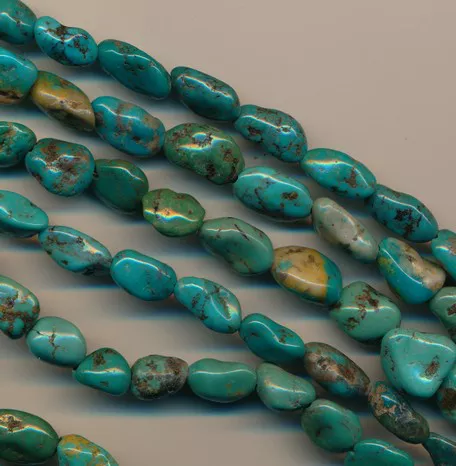Turquoise, with its captivating blue and green hues, has charmed civilizations for thousands of years. This exquisite gemstone holds a significant place in history and culture. Understanding the geographical origins of turquoise provides valuable insights into its availability, characteristics, and cultural significance. In this article, we embark on a journey to explore where turquoise is most commonly found, uncovering the diverse regions where this treasured gemstone emerges from the Earth.
Persia (Iran):
One of the most renowned sources of high-quality turquoise is Persia, present-day Iran. Persian turquoise holds a special place in history and is highly prized for its intense sky-blue color and minimal matrix (host rock) presence. The cities of Nishapur and Neyshabur are particularly famous for their turquoise mines, which have been producing exceptional specimens for centuries. Persian turquoise is esteemed for its beauty and often finds its way into exquisite jewelry and ornamental objects. The historical importance and superior quality of Persian turquoise have made it one of the most sought-after varieties in the world.
United States:
The southwestern United States boasts several noteworthy turquoise deposits. Perhaps the most iconic is the Sleeping Beauty mine in Arizona, which produced vibrant blue turquoise with little to no matrix. Unfortunately, this mine ceased operations in 2012, making Sleeping Beauty turquoise increasingly rare and sought after by collectors. The Kingman mine in Arizona is another significant source of turquoise, known for its vibrant blue stones with attractive matrix patterns. The Royston mine in Nevada produces turquoise ranging from light blue to green with intricate matrix variations, contributing to its popularity among jewelry designers and collectors. Other notable turquoise mines in the United States include the Bisbee mine in Arizona, which produced high-grade turquoise until its closure in the 1970s, and the Pilot Mountain mine in Nevada, known for its unique blue-green turquoise.
Mexico:
Mexico is home to significant turquoise deposits, contributing to its rich turquoise heritage. The state of Sonora is renowned for its Cananea and Milpillas mines, which produce exceptional blue and green-blue turquoise. Mexican turquoise often possesses a distinctive color saturation and matrix patterns that add character to the gemstone. The city of Taxco, known for its silver craftsmanship, has a long-standing tradition of incorporating turquoise into intricate jewelry designs. Other notable Mexican turquoise sources include the Santa Rita mine in Chihuahua and the El Cobre mine in Michoacán.
China:
China has a long history of turquoise production and is recognized as one of the largest suppliers of this gemstone. The Hubei Province, specifically the Zhushan and Ma’anshan mines, yields turquoise ranging from blue to green with matrix variations. Chinese turquoise is highly sought after for its unique color and affordability, making it a popular choice among jewelry designers. Additionally, Tibetan turquoise, which is mined in Tibet and other regions of China, showcases beautiful sky-blue and green colors and is revered for its spiritual significance.
Egypt:
Egypt has been an important source of turquoise for thousands of years. The Sinai Peninsula, particularly the Wadi Maghareh region, is renowned for its historical turquoise mines. Ancient Egyptians valued turquoise as a sacred stone and used it extensively in jewelry, amulets, and religious artifacts. Today, Egyptian turquoise continues to be appreciated for its historical significance and distinctive color. While mining operations in Egypt have significantly diminished, remnants of this ancient turquoise industry still exist.
Other Notable Sources:
Turquoise can be found in various other regions around the world, each offering unique characteristics and color variations. Afghanistan is known for producing high-grade turquoise, with the Sar-e-Sang mine being a notable source. Australia is home to the famous Mount Gunson and Lava Plains mines, which yield vibrant blue and green turquoise. The Atacama Desert in Chile produces fine-quality turquoise, often displaying rich blues with minimal matrix. In Russia, the Nizhne-Petrovskoye deposit in the Ural Mountains is known for its blue and greenish-blue turquoise.
Conclusion:
Turquoise, a gemstone cherished for its mesmerizing colors, holds a rich geographical heritage. From the historical mines of Persia to the iconic sources in the United States and Mexico, turquoise emerges from diverse corners of the Earth, each with its own distinct characteristics. Understanding the origins of turquoise provides insights into its availability, cultural significance, and the appreciation of its beauty. Whether you are a collector, jeweler, or simply an admirer of this captivating gemstone, exploring the regions where turquoise is commonly found adds depth and context to your appreciation of this remarkable natural treasure.


